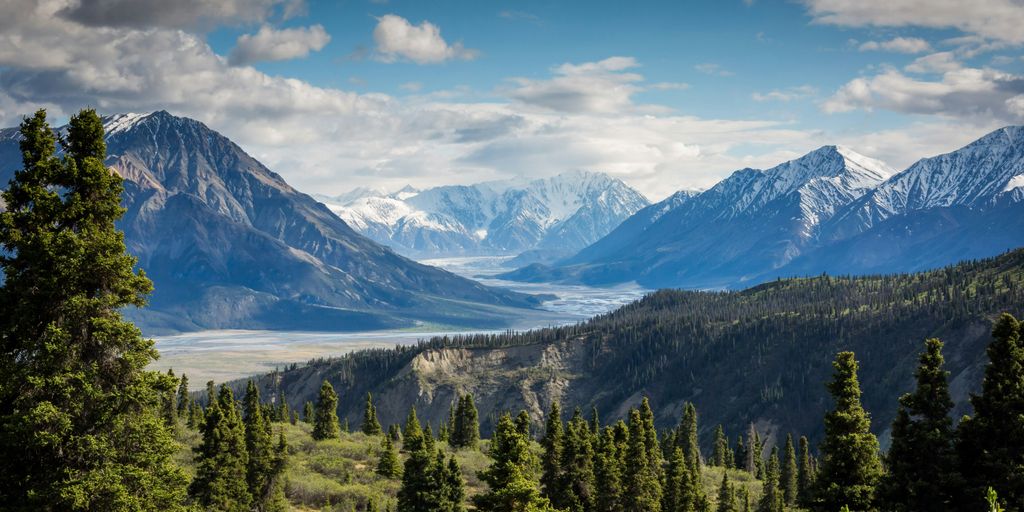Exploring the Unique Architecture: What is a Yurt?
Yurts are fascinating structures with a rich history that dates back thousands of years. Originating in Central Asia, these round, portable homes were used by nomadic tribes. Today, yurts have found a place in modern living, offering a blend of traditional design and contemporary comforts. This article explores the history, structure, modern adaptations, and practical aspects of living in a yurt.
Key Takeaways
- Yurts originated in Central Asia and were primarily used by nomadic tribes.
- The circular shape of yurts provides stability and efficient use of space.
- Modern yurts use advanced materials for better durability and comfort.
- Building a yurt involves careful planning, from choosing the location to construction steps.
- Yurts offer a sustainable and eco-friendly living option, popular in both personal and commercial uses.
Understanding the Yurt: A Historical Perspective
Origins in Central Asia
Yurts have a rich history that dates back thousands of years. These portable, dome-shaped tents originated in Central Asia, where they were used by nomadic tribes. The first mentions of yurts can be traced back to as early as 600 BCE. These early structures were designed to withstand the diverse and often harsh climatic conditions of the region, from scorching summers to freezing winters.
Traditional Uses by Nomadic Tribes
Nomadic tribes across the Eurasian Steppe, which stretches from Hungary to China, relied on yurts as their primary dwellings. The circular shape of the yurt provided stability against strong winds, while the materials used, such as felt and wood, offered excellent insulation. These tribes moved frequently, and the yurt’s design made it easy to dismantle and transport.
Introduction to the Western World
The yurt made its way to the Western world in the 1960s, thanks to William Coperthwaite. Inspired by a National Geographic article about Mongolia, Coperthwaite built the first yurt in the United States. His efforts popularised yurt building across North America, leading to a growing interest in these structures as alternative, sustainable, and affordable living spaces.
The Anatomy of a Yurt: Structure and Design
Circular Shape and Its Benefits
Yurts are known for their unique circular shape, which isn’t just for looks. The round design helps distribute stress evenly across the structure, making it incredibly strong and wind-resistant. This shape also makes heating and cooling more efficient, as air can circulate freely without getting trapped in corners.
Materials Used in Construction
Traditional yurts are made from a variety of natural materials. The walls are usually crafted from wood like hazel or willow, forming a lattice that unfolds like an accordion. The roof is supported by rafters that connect to a central crown, often featuring a hole for a chimney or skylight. The entire structure is then covered with fabric, traditionally made from sheep’s wool felt. Modern yurts, however, often use materials like canvas or vinyl for better durability and weather resistance.
Innovative Design Features
One of the coolest things about yurts is how they combine ancient techniques with modern innovations. For example, many modern yurts include skylights for natural lighting and use high-tech insulation materials to keep the interior comfortable year-round. Some even have built-in platforms for added stability and ease of setup. The tension band around the outside of the yurt provides immense strength, pulling in and up on the rafters when weight is applied to the roof, like during heavy snowfall.
The yurt’s design is a perfect blend of simplicity and sophistication, making it a versatile and durable option for various living conditions.
Modern Adaptations of Yurts
Yurts have come a long way from their traditional roots, finding new roles in our modern world. Let’s dive into some of the exciting ways yurts are being used today.
Contemporary Materials and Techniques
Modern yurts are built with a mix of traditional and contemporary materials. While the basic structure remains the same, modern adaptations can include insulation upgrades, additional windows, house wrap (for humid areas), and solar panels, making gers suitable for year-round living. These changes not only make yurts more comfortable but also more durable and energy-efficient.
Luxury Yurts: Comfort Meets Tradition
Luxury yurts take the traditional design and add a touch of opulence. Imagine a yurt with hardwood floors, plush furnishings, and even a hot tub! These yurts offer a unique blend of comfort and tradition, making them perfect for glamping or as a stylish guest house. They provide all the modern amenities while still maintaining the charm of a traditional yurt.
Eco-Friendly and Sustainable Living
One of the biggest reasons why yurts are gaining popularity in modern living is their eco-friendly nature. Yurts are often built with sustainable materials and have a low environmental footprint. They are perfect for those who want to live closer to nature without harming it. Plus, their circular design promotes efficient heating and cooling, making them a smart choice for green living.
Yurts are not just homes; they are a lifestyle choice that reflects a commitment to sustainability and a simpler way of living.
From contemporary architecture to eco-friendly living and popular culture, yurts are proving to be more than just a relic of the past. They are a versatile and sustainable option for modern living.
Building Your Own Yurt
Choosing the Right Location
Picking the perfect spot is the first step in building your yurt. You can set up a yurt almost anywhere there’s flat, open land. Think about privacy, views, and how easy it is to get utilities like water and electricity. Privacy and views are key factors to consider.
Essential Construction Steps
- Prepare the Site: Before you start building, you need to get the site ready. This means setting up a foundation and connecting utilities. You can use crushed stone, wood, or concrete for the foundation. Make sure the foundation suits the climate and soil.
- Build the Frame: Once the site is ready, you can start building the yurt. This involves setting up the circular frame, adding the roof, and installing the door and windows. It’s like putting together a big, round puzzle.
- Cover the Frame: After the frame is up, cover it with fabric. Traditional yurts use wool felt, but modern ones often use canvas or vinyl. The fabric keeps the yurt warm in winter and cool in summer.
Tips for a Successful Build
- Use Quality Materials: Good materials make a big difference. They ensure your yurt is sturdy and lasts a long time.
- Follow Instructions: Stick to the building instructions carefully. This helps avoid mistakes and makes the process smoother.
- Ask for Help: Building a yurt can be a big job. Don’t hesitate to ask friends or family for a hand.
Building a yurt is a fun and rewarding project. With the right planning and preparation, you can create a cosy, unique home that brings you closer to nature.
Living in a Yurt: Practical Considerations

Living in a yurt is a unique experience that brings you closer to nature while offering a cosy and comfortable living space. However, there are several practical considerations to keep in mind to ensure a pleasant and sustainable lifestyle in a yurt.
Yurts in Commercial Use
Yurts as Holiday Accommodations
Yurts have become a popular choice for holiday accommodations, especially in the glamping industry. They offer a unique blend of rustic charm and modern comfort. Imagine staying in a yurt with plush bedding, heating, and even plumbing! It’s like camping but with all the luxuries you could want. Many eco-lodges around the world offer yurt glamping sites, providing a unique experience for nature lovers.
Yurts in Retail and Hospitality
Yurts aren’t just for camping; they are also making waves in the retail and hospitality sectors. Some businesses use yurts as unique retail spaces or pop-up shops. Their round shape and cosy interior make them perfect for creating a welcoming atmosphere. In the hospitality industry, yurts are used as dining spaces, lounges, or even as unique hotel rooms. The possibilities are endless!
Case Studies of Successful Yurt Businesses
There are many successful yurt businesses out there. For example, in Oregon, parks have started using yurts to attract more campers. They offer a comfortable and affordable alternative to traditional cabins. Another great example is the Sushi Yurt in Britain, a travelling restaurant that serves Japanese cuisine. These businesses show how versatile and profitable yurts can be in the commercial world.
The Cultural Significance of Yurts
Symbolism in Central Asian Cultures
Yurts, or ‘gers’ as they are known in Mongolia, are more than just shelters. They are symbols of national identity and a testament to the nomadic traditions that are central to Mongolian culture. These structures have captured the world’s imagination as emblems of a traditional lifestyle and masterpieces of craftsmanship and adaptability. Each yurt’s components are carefully constructed and assembled, revealing much about the values and skills of a society that honours flexibility and sustainability. Beyond their functional aspects, gers are brimming with cultural significance, serving as a living testimony to Mongolia’s rich past and present way of life.
Yurts in Modern Media and Popular Culture
Yurts have also found their way into popular culture. They often appear in TV shows and movies as symbols of alternative living. Whether it’s a unique holiday accommodation or a stylish backyard retreat, yurts continue to capture the imagination of people around the world. Their versatility and charm make them a favourite in shows about sustainable living and off-grid lifestyles.
Yurts are not just homes; they are a lifestyle choice that reflects a commitment to sustainability and a simpler way of living.
Preservation of Traditional Yurt-Making Skills
Over the centuries, yurts have evolved significantly. During the time of the Mongol Empire, yurts became more elaborate and were often decorated with intricate designs. The Mongols used yurts not only as homes but also as mobile command centres during their military campaigns. This period saw the yurt become a symbol of power and prestige. The traditional skills involved in yurt-making are still preserved today, ensuring that this unique form of architecture continues to thrive. It is a symbol of home and family and represents an opening up to the world.
Yurts have been a part of many cultures for centuries. They are not just homes but symbols of tradition and community. If you want to learn more about the fascinating history and modern uses of yurts, visit our website. Discover how these unique structures can add a touch of magic to your life.
Conclusion
In summary, yurts are more than just unique shelters; they are a blend of history and modern living. From their ancient roots in Central Asia to their contemporary uses around the world, yurts have proven to be versatile and sustainable. They offer a cosy and eco-friendly living space that connects us to nature and our past. Whether used as homes, holiday spots, or unique business spaces, yurts continue to capture the imagination and provide practical solutions for modern living. So, next time you see a yurt, remember it’s not just a tent—it’s a piece of living history that stands the test of time.
Frequently Asked Questions
What is a yurt?
A yurt is a portable, round tent traditionally used by nomadic people in Central Asia. It has a wooden frame and is covered with felt or fabric.
How old are yurts?
Yurts have been around for thousands of years. The earliest records date back to around 600 BCE.
What materials are used to build a traditional yurt?
Traditional yurts are built using a wooden frame, often made from willow or birch, and covered with felt made from sheep wool.
Why are yurts important in Mongolian culture?
In Mongolia, yurts are symbols of national identity and a connection to nomadic traditions. They represent a way of life that values flexibility and sustainability.
How are yurts used in modern times?
Today, yurts are used in various ways, including as eco-friendly homes, holiday accommodations, and even in TV shows and movies.
Where can you find yurts outside of Mongolia?
Yurts have gained popularity worldwide and can be found in places like Europe and North America. They are often used in eco-resorts, glamping sites, and sustainable living communities.





